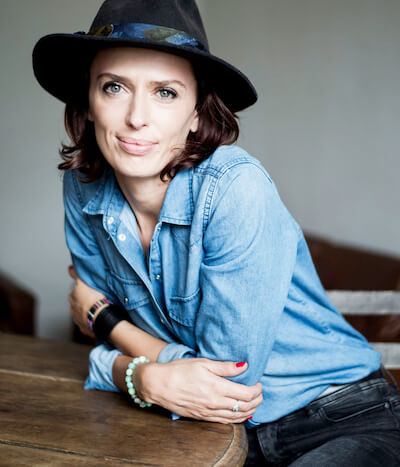Q: Tell us a little bit about your background!
I am a French photographer, born in 1981 in a small village in Brittany, in the west-northwest part of France. I studied photography in Paris EMI’s school. My work explores the construction of identity, cultural diversity and minorities with a focus on women issues and their construction in a changing society.
Q: When was the moment you realized you have a passion for photography?
I have always wanted to be a photographer since I was young. I found it a great way, a good excuse to meet different people, new cultures. I have always been very curious. I first was interested in making documentary pictures, stories and then little by little I dedicated myself more to portraiture.
Q: Do you ever have trouble getting inspired? What do you do when moments like this arise?
Never! I have so many stories I would like to tell.
Q: What would you say is the hardest thing about photography?
To trust yourself.
Q: You have been chosen Book Photographer of the Year for your beautifully colorful work “Flowers of the Isthmus.” How was this project born?
About the story: I have always been interested in Women issues, especially in Latin America. In 2019, when I travelled to Mexico, I had heard about a community of women in the Isthmus of Tehuantepec, South Mexico, known for their strength, independence and their power in the economical field. An astonishing community that some qualify as matrilineal. I quickly wanted to meet them and contacted a local journalist there, now a friend, Diana Manzo who helped me to realize the project.
About the book: At first, I hadn’t planned to make a book out of this project. It is my editor Pierre Bessard – who published my first book about the Bolivian Cholitas in 2017 – who one day asked me to show him the stories I did in Mexico. When he saw “Flowers of the Isthmus”, he instantly liked the bright colors, the use of the traditional Mexican oilcloth to frame the pictures as well as the story behind the photographs. He asked me if I wanted to publish another book with him. I agreed instantly. The book industry is very tough nowadays, and especially in the photo industry. A lot of photographers produce their own books or use crowdfunding platforms to cover the costs of the production. I feel very lucky to work with people like Pierre Bessard who believed in my work since the beginning.
Q: Jury member Irina Chmyreva, Ph.D. said the following about your work: “To make such a bright color design for colorful portraits is a big attempt, and I feel it is a very successful realization.” And indeed, the placement of the portraits and all the different types of bright colours is masterful. How much time did you spend planning how the book will look?
For this book, I worked with Orianne Mazeau, a very talented French graphic designer.
Right from the beginning, Orianne perfectly understood my work and the story I wanted to tell with my photographs. Even if I had some ideas about the design of the book, she is the one who really made the work an object in its own right. She is very creative. Not only we worked on the book in itself but also on the way to present it, in this original box.
It is a complex book and we spend quite a lot of time thinking about the best way to highlight the pictures but also to bring something more and to create a real object. Some of the interior pages are cut with a square window to allow the reader to play with frames and patterns. We met quite often to find the best way to organize the pictures, to combine them with the different frames. Orianne had printed all the pictures and frames separately and we spent a whole afternoon organising them on the floor of Orianne’s office to find the best combinations. It was like a game, a puzzle to organize. It was a fun thing to do and I had a lot of fun with Orianne finding the best combinations “ oilcloth frames – pictures” and building the flat plan of the book. We then spend some time choosing the best material, paper, riban, oilcloth, etc.
The book is a real extension to my work.
Q: What was the hardest aspect of planning and how did you know when you’d arrived at the final plan?
Everything went pretty smoothly so I don’t remember especially having a hard time on a specific aspect.
Q: Why did you decide on entering this particular project into the IPA?
I knew about the IPA and I had the feeling that the book and this work about these inspiring Mexican women could be recognized in a competition like that.
Q: What does winning this competition mean to you?
First of all, it is a great way to highlight the women who participated in the project and to tell more about the history and culture of the Zapotec women. It is also a way to recognize a teamwork: my editor + graphic designer. It is comforting in times when the book industry is facing difficulties.
Q: If you could do anything or go anywhere, what would your dream photography project be?
I don’t especially have a dream project/ Each one is unique. Whether in work in a small village in France and tell the story of elder people or when I travel aboard in indigeneous communities. And when I want to go somewhere to tell a story, I just go there and see what’ll happen. I always try to pursue my dreams. I don’ want to have regrets.
Q: What is next for you, are you working on anything right now?
I am currently in the Dominican Republic, where I will be staying for two months working on new projects.

